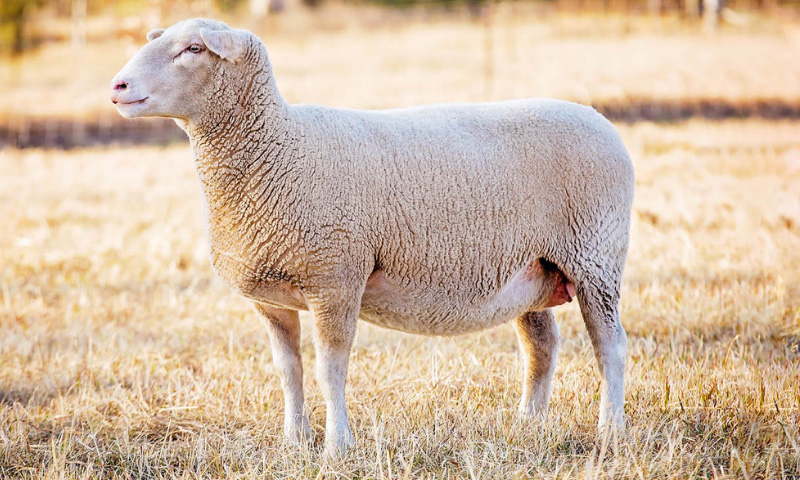Is Pregnancy Toxaemia Affecting Your Flock?
Pregnancy Toxaemia is a metabolic disorder in ruminants that is a result of a high carbohydrate or energy demand by the foetus exceeding what the mother can supply from her diet during the last trimester of pregnancy. Pregnancy Toxaemia is often amplified by multiple or large foetuses, poor quality feed containing low energy and protein, or high levels of poorly digestible fibre. Health conditions increasing energy demand or decreasing animal ability to take in nourishment, such as parasitic burdens, poor teeth or lameness, will further increase risk of pregnancy toxaemia.
Pregnancy Toxaemia or Ketosis is caused by abnormal metabolism of carbohydrates and volatile fatty acids. It is a highly fatal disease among sheep, goats, and cattle during late pregnancy and is characterised by fatty infiltration of the liver, ketone bodies in the blood and urine, hypoglycaemia, and low liver glycogen.
PREGNANCY TOXAEMIA IN SHEEP
Pregnancy Toxaemia is also known as Twin Lamb Disease, Pregnancy Disease, Ketosis, Acetonaemia, or Lambing sickness (Hungerford 1990).
CAUSE
Pregnancy Toxaemia is caused by a severe lack of glucose in the bloodstream derived from a combined deficiency of food and demands of pregnancy. Abnormal fat and carbohydrate metabolism, associated with exhaustion of carbohydrate reserves in the liver, can lead to ketone bodies becoming present in the bloodstream which can result in brain damage and nervous derangement. Similar to cattle, fat is used as a major maternal energy source and ketones are produced as a consequence, meaning more fat becomes mobilised as more ketones are produced. Ketone levels can become toxic when sheep receive inadequate nutrition over prolonged periods of time, leading to reduced feed intake and clinical signs of pregnancy toxaemia.
Ewes at high risk of developing pregnancy toxaemia include those with a poor body condition score, who are over-fat, or carrying more than one foetus. Other predisposing and stress-related causes of the disease include a rapid drop in the plain of nutrition caused by sudden starvation, which is often seen when yarding overnight, shearing, during drought, transport, heavy droving, and to a lesser extent, rapid changes in weather condition. Other health factors increasing risk of the disease include old age, poor teeth, heavy parasitic burdens, and conditions such as foot-rot.
SIGNS AND SYMPTOMS
- Pregnancy
- Depression/drowsiness/dopiness
- Reduced or absent appetite
- Separation from the flock
- Nasal discharge
- Apparent blindness
- Chewing, teeth grinding, or vigorous licking movements
- Neurological signs (staggering, wandering aimlessly, star gazing)
- Detecting a sweet acetone-like odour on their breath
- Sternal recumbency (sitting on their sternum)
- Head pulled back or sideways
- Convulsions – Death
PREVENTION STRATEGIES
Nutritional demands among pregnant ewes will increase during the last few weeks of gestation when the foetus starts to grow rapidly. Circumventing negative energy balance by ensuring pregnant animals receive an adequate plain of nutrition to meet energy, protein, fat, mineral, and vitamin needs is crucial and equally important during parturition and lactation.
In most cases, supplementary feeding with energy-dense ingredients, such as cereal grains or lupins, will be required to overcome energy deficiency often experienced in the final trimester (especially in the last 6 weeks of gestation) due to reduced feed intake. In addition to meeting energy and protein requirements, it is imperative sufficient levels of macro and trace minerals are provided to help meet the greater requirements of pregnancy and lactation. Research has also found using supplements containing monensin or lasalocid can help improve energy metabolism.
Carefully managing and monitoring dietary intake is important to avoid getting ewes and cows too fat (i.e. fat score greater than 3.5-4) or too thin (i.e. fat score less than 2-2.5) in late pregnancy. Effective prevention of pregnancy toxaemia should also consider avoiding stressful management practices, such as mustering, yarding, shearing, etc. in heavily pregnant animals.
For information on how AgSolutions can help you manage your pregnant stock, please contact us on 1800 81 57 57.
